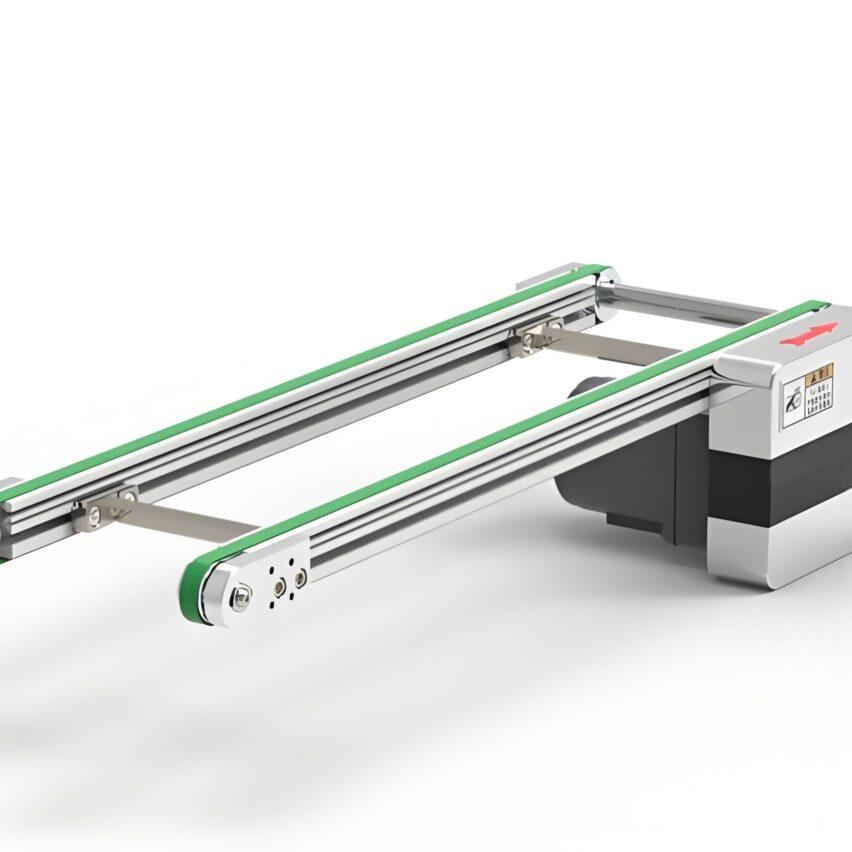In the wave of transformation and upgrading of manufacturing industry, the efficiency bottleneck of sub-assembly link has become a key factor restricting the overall production capacity. The multiplier chain assembly line developed by Shenzhen Kaiwei Automation Equipment Co., Ltd. provides a set of efficient and stable sub-assembly solutions for the electronics, automotive, home appliance and other industries through innovative differential transmission technology and modular design.
I. What is the core value of the multiplier chain? Why can it become an efficiency tool?
Multiplier chain assembly line adopts specially designed chain to cooperate with the workpiece plate, so that the workpiece plate moves at 2-3 times the speed of the chain. Its core value is to achieve three major breakthroughs through physical speed increase:
- Work process convergence optimisation: the work plate accurately resides in the assembly station, eliminating the waiting gap in the traditional assembly line, and shortening the sub-assembly beat by more than 30%;
- Flexible production compatibility: The modular track design supports rapid switching of product models, e.g. automotive parts production lines can be mixed to produce different engine models;
- Space Efficiency Multiplier: Upper and lower circulation mode (flat + three-dimensional conveying) saves 40% of space compared to the traditional single-layer production line. After the introduction of a refrigerator door body sub-assembly link in a home appliance enterprise, the daily production capacity of a single line was increased from 800 units to 1,200 units.
Second, how to maximise sub-assembly efficiency? Which scenarios are most suitable for application?
There are three key points of operation that need to be grasped in order for the multiplier chain to be extremely effective:
- Synergy of air pressure system: 0.6MPa constant air pressure should be ensured before starting to avoid positioning deviation caused by unstable chain speed increase;
- Intelligent control of workpiece plate: millimetre-level positioning of sub-assembly parts (accuracy ±0.5mm) is achieved by linkage of block mechanism and PLC;
- Closed Loop Material Cycle: Empty pallets are automatically returned to the starting point via the top rail, forming a continuous work flow.
The technology has now demonstrated outstanding value in three major scenarios:
- Electronic industry: display flip assembly, with the Kaiwei automatic screen standing machine to achieve 180 ° accurate flip;
- Automotive Manufacturing: New energy battery module sub-assembly line with heavy-duty chains with a load-bearing strength of 4000kg to ensure safety;
- In the field of household appliances: in the press fitting process of washing machine drum bearings, the servo positioning system has increased the press fit pass rate to 99.2%.
III. What are the risks that would be faced if the speed-chaining programme were not adopted? How can they be targeted?
The main efficiency pitfalls common to traditional sub-assembly lines are:
- Risk of Beat Imbalance: Differences in the operating time of each station in a manual assembly line lead to wasted capacity and an average efficiency loss of 25%;
- Quality fluctuation hidden danger: manual handling is easy to cause precision parts bump, such as server motherboard assembly damage rate as high as 3%;
- Reconstruction cost dilemma: special equipment is difficult to adapt to product iteration, production line reconstruction costs accounted for 30% of the total value of equipment.
Cadwalader's response strategy consists of a triple guarantee:
- Intelligent buffer design: Accumulation zone is set up in front of the inspection station to automatically adjust the rhythm of abnormal stations;
- Anti-static treatment: the surface of aluminium profile rail is anodised to eliminate static damage during the assembly of electronic components;
- Non-standard customisation service: support customers' existing equipment interface modification, reduce upgrade costs (case shows that the cost of modification than new construction to save 65%).
Fourth, how to choose the appropriate speed chain configuration? What are the maintenance points?
Selection needs to focus on three dimensions:
- Load classification: light load line (≤2.2 tonnes) is suitable for mobile phone assembly, heavy load line (≤4 tonnes) is suitable for automotive parts;
- Environment: Stainless steel for food industry, anti-static coating for electronic workshop;
- Intelligent expansion: reserved MES system interface to achieve production data traceability.
Routine maintenance follows the principle of "three checks, two cleans":
- Check air pressure values, chain tension, and track foreign objects before starting;
- Daily cleaning of tooling board slot debris, guideway oil;
- Replace the gearbox lubricant quarterly to avoid failure of the speed increase.
As the core equipment for sub-assembly in the era of Industry 4.0, Cavium multiplier chain assembly line is continuing to evolve: the carbon fibre chain technology enables the equipment to reduce weight by 40%, and the AI vibration analysis system can warn of failures 48 hours in advance. This set of solutions integrating mechanical precision and digital intelligence will continue to empower the manufacturing industry to break through the efficiency dome and maintain a leading position in the race to improve quality and reduce costs.













